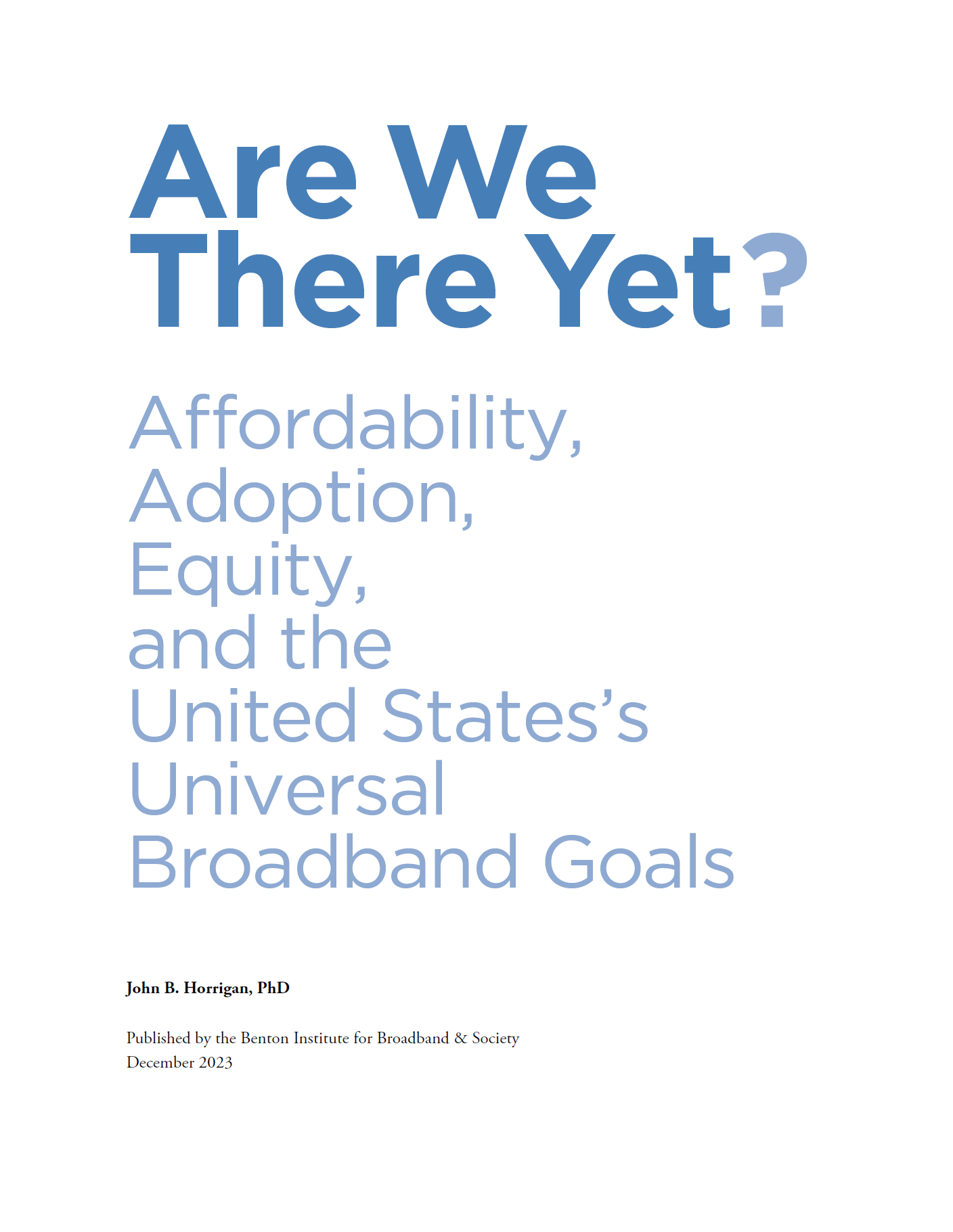Are We There Yet?
Affordability, Adoption, Equity, and the United States’s Universal Broadband Goals
Published by the Benton Institute for Broadband & Society; Written by John B. Horrigan, PhD
How should broadband adoption, affordability, and equity impact the Federal Communications Commission (FCC)’s assessment of the availability of broadband for all Americans? A review of recent research indicates that it is not enough for networks to meet just certain deployment benchmarks. Consumer behavior is part of the picture: We cannot reach our universal broadband goals without widespread adoption, and we cannot achieve universal broadband adoption if service is not affordable. Evidence of extensive build-out of very-high-speed networks is a partial indicator of progress toward universal broadband goals. Whether service offerings are affordable and how adoption of them unfolds along lines of income, race, ethnicity, and geography are also important metrics.
Determining whether the United States is progressing toward its universal broadband goals means more than measuring the “where” and “how fast.” The FCC must also include metrics about affordability, adoption, and equity. With broadband adoption gaps still very real and the Affordable Connectivity Program that addresses some of them at risk of ending, the FCC should come to the determination that universal broadband goals are not being met.
Going forward, the FCC should take a systematic approach to tracking broadband affordability.


